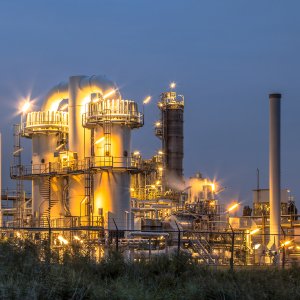
Great Potential but Also Many Challenges
Mexico is among the world’s top consumers of refined products. As the sixth-biggest consumer of gasoline, third-largest of LP gas and number nine for natural gas, there is great potential for growth in the country’s midstream and downstream sectors. But strong demand does not necessarily go hand in hand with optimal market development. PEMEX’s 76-year monopoly and the prioritizing of upstream investment has resulted in an underdeveloped midstream and downstream industry that is not adequate to meet the country’s needs.
The lack of investment in and maintenance of critical infrastructure to ensure transportation, distribution and storage of hydrocarbons will take time to address. Although private companies have had the opportunity to invest in natural gas infrastructure for over two decades, for example, the country’s increasing dependence on imports pushed such investment down the priority list. Now, as domestic production rises, businesses are seeing a brighter opportunity. The opening of the market for fuel distribution is adding storage and transportation infrastructure for refined products to the list of positive prospects.
Arturo Vivar, CEO of Monterra Energy, is among those planning to be ahead of the curve. “Monterra is already working on the permitting process at several coastal and inland sites around the country,” he says. “Monterra will be one of the first companies to start building infrastructure in Mexico and possibly starting operating these new projects as early as 2019.”
Interest in the country’s existing infrastructure is also growing. Open seasons allow private companies to bid for existing transportation and storage capacity for refined products and after an initial three-month delay the first such round was completed on May 2, 2017, with refiner Tesoro Corporation awarded Baja California and Sonora capacity systems that in total sum up 320,679 barrels for storage and 9,535b/d for transport.
With six refineries and nine gas-processing units serving the entire country, the challenges facing Mexico’s downstream sector are not so much capacity installed but production efficiency. In 2015 production efficiency only reached 61 percent and the percentage of nonscheduled shutdowns reached almost 13 percent. Although operational excellence represents an opportunity for improvement, downtime is also related to supply chain inefficiencies, as 74 percent of the nonscheduled shutdowns were related to the supply of services. In its 2017-2021 business plan, PEMEX stated its commitment to revamping its refineries through alliances focused on auxiliary activities, operation and maintenance.
The opening of the fuel distribution market is a simultaneous challenge and opportunity for Mexico. It is expected that by 2018 the entire distribution market will be liberalized and although the gasolinazo of January 2017 that marked the liberalization of gasoline and diesel prices was not well received by the Mexican people, the decision to move forward at a rapid pace is a clear commitment to the Energy Reform. Fortunately companies are considering the market opening to be an opportunity and are pushing hard to get strategic advantages by moving quickly. BP, for example, has already opened its first gas station that does not commercialize PEMEX’s products.
New players in the gas station business are creating and positioning new brands and seeking ways to differentiate their value proposition by offering additional services at their gas stations. “The franchise sector is enthusiastic because they know they have opportunities to expand,” says Juan Gallástegui, President of Gallástegui Armella Franquicias. “Soon we will see banks, more sophisticated cafes and small restaurants in gas stations and people will decide which gas station they will visit based on these services.”
Without a doubt the Mexican midstream and downstream sectors have entered a period of transformation. Being ready and adaptable at these times of change will be crucial to make this a positive transition toward a liberalized market.
















